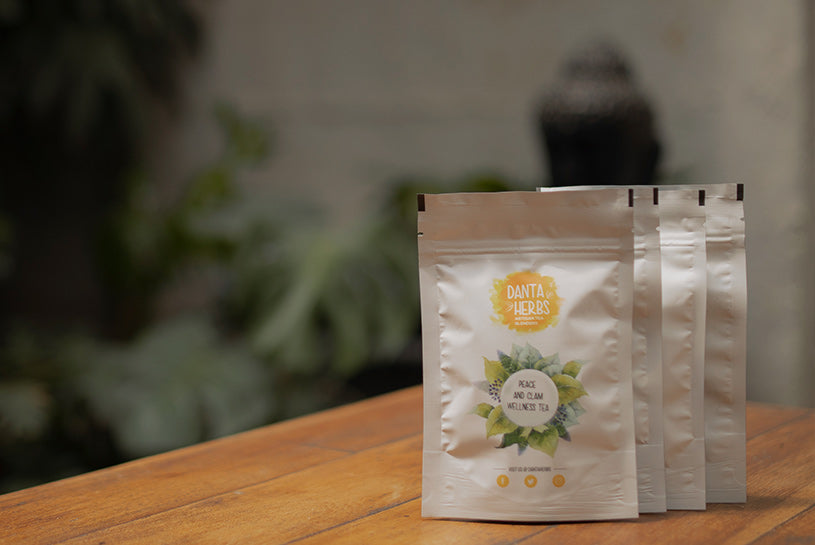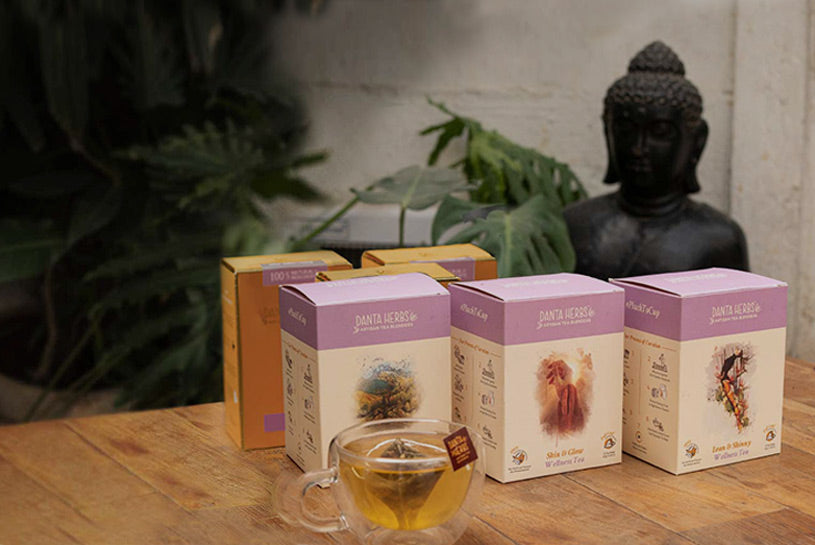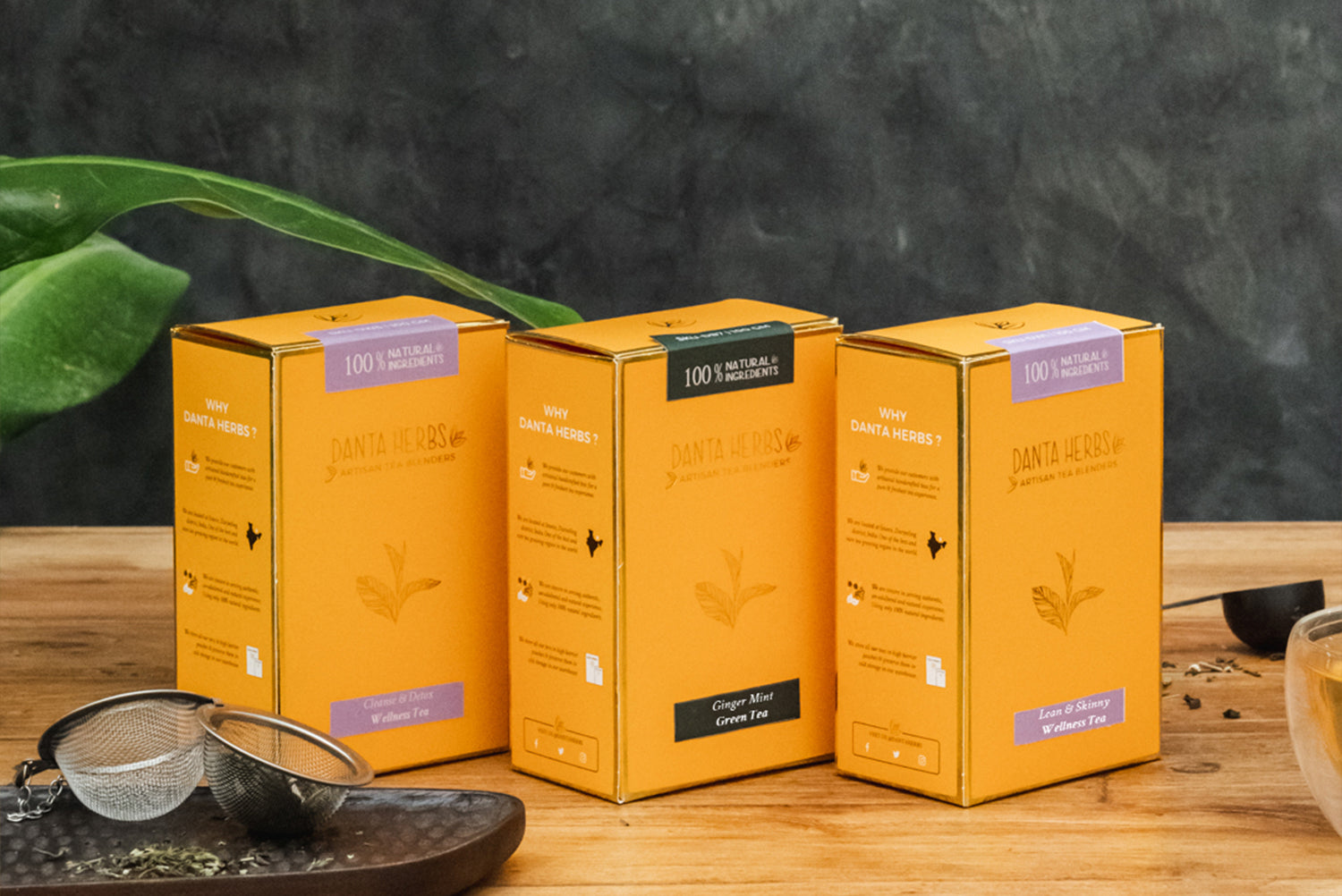Understanding the Chemistry of Tea - Danta Herbs

WHAT IS IN TEA? - UNDERSTANDING THE CHEMISTRY OF TEA
While sipping on that brew, one may not fully be aware of the various properties of the tea. We often hear tea is nutritious and is good for our health. The mindfulness of it’s constitution will help one determine how tea influences one’s well-being. Tea leaves contain thousands of chemical compounds. When they are processed, these compounds break down and form new compounds. When we steep tea leaves, our senses are tingling by the thousands of compounds, collectively known as the “aroma complex” from the tea liquor. Tea essentially has – Polyphenols, Methylxanthines, Minerals, Volatiles, Amino Acids, Enzymes, Pigments, Carbohydrates.
Polyphenols
In steeped tea, polyphenols are largely responsible for astringency. The term polyphenol simply refers to a categorization of compounds composed of many phenolic groups, hence the name poly-phenol. These compounds are plant metabolites produced as a defence against insects and other animals and are the most abundant compounds in tea comprising as much as 30-40% of both freshly plucked tea leaves and solids in tea liquor. They are derived from amino acids via sunlight and therefore tea grown in the shade has a smaller concentration of polyphenols and a higher concentration of amino acids. The bud and first leaf have the highest concentration of polyphenols and polyphenol levels decrease in each leaf moving down the plant. There are an estimated 30,000 polyphenolic compounds in tea, flavonoids are arguably the most important group of polyphenols in tea and are the source of the many health claims surrounding tea, and specifically tea antioxidants.
Methylxanthines
Methylxanthines in tea include the stimulant caffeine and two similar compounds: theobromine and theophylline. The tea plant creates these chemicals as a natural combatant towards insects and other animals. On average, methylxanthines in tea leaves make up 2% to 5% of the dry weight of the fresh leaves. They attribute to a bitter taste in the tea infusion. Levels of these compounds depend on the variety of Camellia sinensis used, climate, age of the leaves, and the propagation method used on the plant.
Minerals
There are 28 mineral elements found in the tea flush. Compared to other plants, tea has a higher than average amount of: fluorine, manganese, arsenic, nickel, selenium, iodine, aluminium, and potassium. Tea minerals vary greatly with each harvest and change greatly during processing.
Volatiles
The volatile substances in tea leaves are largely responsible for tea’s flavour and aroma. The aroma complex of tea is made up of a myriad of flavours (hundreds and thousands) of flavour and aroma compounds that exist in trace amounts. Many of these aromatic compounds do not exist in fresh tea leaves and are derived during processing. The flavour and aroma of each tea depends on a wide variety of combinations of these compounds, hence the name aroma complex. Compounds such as, linalool and linalool oxide are responsible for sweetness; geranial and phenyl acetaldehyde are responsible for floral aromas; nerolidol, Benzaldehyde, methyl salicylate, and phenyl ethanol are responsible for fruity flavours; and trans-2-hexenal, n-hexanacis-3-hexenol, and b-ionone are responsible for a tea’s fresh flavour.
Amino Acids
Amino acids give tea its brothiness, or umami taste. Tea leaves contain many amino acids, the most abundant of which is thiamine. There are only three natural sources of thiamine found in nature, Camellia sinensis, a mushroom called Boletus badius, and a plant called guayusa (which is often processed into a tisane). In the gardens, sunlight converts amino acids to polyphenols, and as such; shade grown tea contains more amino acids than tea grown in direct sunlight. Some tea bushes are even deliberately shaded for several weeks before harvest to enhance the tea’s amino acid content.
Enzymes
Polyphenol oxidase and peroxidase are the most important enzymes in tea leaves. They are responsible for the enzymatic browning of tea leaves that takes place when the cell walls in the leaves are broken and the polyphenols are exposed to oxygen – otherwise known as oxidation. These enzymes may be deactivated using heat so that browning cannot occur; this is one of the first steps in green tea production and is the reason why finished green tea leaves remain green. The enzymes may also be denatured by simply depriving them of moisture for a time which is what happens during the long withering period in white tea production.
Pigments
Plant pigments are responsible for absorbing light for photosynthesis. Pigments also give leaves their colour. There are two major groups of pigments in fresh tea leaves: chlorophylls and carotenoids. These pigments condense during withering and oxidation and become darker. During oxidation, the green colour of tea chlorophylls is converted to black pigments known as pheophytins. This conversion leads to the dark appearance of finished oxidized teas. Tea carotenoids are another pigment group found in tea leaves and are mainly composed of carotenoids which are orange and xanthophylls which are yellow and are also responsible for the colour of finished tea leaves.
Carbohydrates
All plants store energy formed during photosynthesis in starches and sugars, otherwise known as carbohydrates. Plants later use this stored energy to fuel important reactions, in tea, carbohydrates help to fuel the enzymatic reactions that take place during oxidation and are also responsible for the creation of polyphenols in young tea leaves. Carbohydrates make up on average 11% of extract solids in steeped tea and lend to its sweetness.
We at Danta Herbs bring you freshest leaves for your magical brew from the tea estates in Darjeeling, Nilgiris, Assam, Kangra, North east and Nepal.
FAQ’s:
- What is the chemical composition of tea?
The major flavonoids in tea are: catechin (C), epicatechin (EC), epicatechin gallate (ECG), gallocatechin (GC), epigallocatechin (EGC), and epigallocatechin gallate (EGCG). EGCG is the most active of the catechins, and this flavanol is often the subject of studies regarding tea antioxidants.
2. What is Tannins in tea? Is tannin present in tea?
Tannins are present in naturally occurring substances and organic matter, including leaves and wood. Teas with high levels of tannins have a bitter taste accompanied by strong astringency, seen especially in green and black tea. The tannins found in tea are thearubigins, most prominently theaflavins.
What is the chemical composition of tea?
The major flavonoids in tea are: catechin (C), epicatechin (EC), epicatechin gallate (ECG), gallocatechin (GC), epigallocatechin (EGC), and epigallocatechin gallate (EGCG). EGCG is the most active of the catechins, and this flavanol is often the subject of studies regarding tea antioxidants.
What is Tannins in tea? Is tannin present in tea?
Tannins are present in naturally occurring substances and organic matter, including leaves and wood. Teas with high levels of tannins have a bitter taste accompanied by strong astringency, seen especially in green and black tea. The tannins found in tea are thearubigins, most prominently theaflavins.




